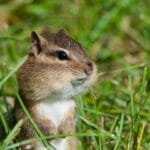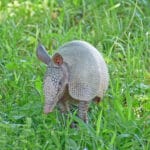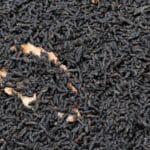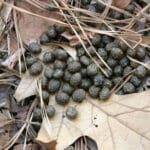What Your Backyard Treasures Reveal
Armadillos, those armored wonders of the animal kingdom, are fascinating creatures with an intriguing secret hidden in plain sight—their poop! Far from being just a nuisance, armadillo droppings offer a glimpse into their diet, habits, and the crucial role they play in the ecosystem.
Identifying Armadillo Poop: Clues from Shape, Size, and Smell
So, what exactly does armadillo poop look like? Imagine small, dark brown to black pellets, roughly an inch long, scattered around your yard. These pellets are cylindrical and often contain remnants of their diet, such as insect exoskeletons, soil particles, or tiny twigs.
But here’s the real giveaway—the smell. Armadillo poop has a distinct, pungent odor, often described as ammonia-like. This potent aroma is a surefire way to distinguish it from other animal droppings.
Beyond the Backyard: Armadillo Latrines and Their Significance
Armadillos are creatures of habit and often designate specific areas, called latrines, for defecation. Finding a latrine, usually located in secluded spots with dense vegetation or near their burrows, significantly increases the likelihood of a nearby armadillo presence.
Potential Dangers: The Importance of Safe Handling
While generally harmless, armadillo poop can harbor potential risks:
- Leprosy: Armadillos are known carriers of Mycobacterium leprae, the bacteria that causes leprosy in humans. While transmission primarily occurs through repeated contact or inhalation of infected dust, it’s crucial to handle their droppings with caution.
- Other Diseases: Their scat might contain parasites or bacteria potentially harmful to humans and pets.
Always wear gloves and a mask when handling armadillo poop and seal it in plastic bags before disposing of it in the trash.
A Window into Their World: What Armadillo Poop Reveals About Their Diet
Analyzing armadillo poop provides valuable insights into their diet and its impact on the environment:
- Primarily Insectivorous: The presence of insect fragments in their droppings highlights their role in regulating insect populations, a boon for gardeners and ecosystems alike.
- Surprisingly Diverse Diet: Contrary to popular belief, armadillos aren’t solely insectivores. Their scat often reveals a more diverse palate, including fruits, fungi, and even small vertebrates, showcasing their adaptability and influence on the food web.
Coexisting with Armadillos: Tips for Responsible Management
Sharing your space with armadillos requires responsible management:
- Remove Attractants: Secure food sources like gardens and compost piles and clear brush piles where armadillos might seek shelter.
- Consider Repellents: Commercial repellents or natural deterrents, like spreading cayenne pepper around the perimeter of your property, might discourage armadillos.
- Install Physical Barriers: Erecting fences around gardens or specific areas can prevent armadillos from accessing those spaces.
- Contact Professionals: If you’re struggling to manage armadillo activity, consider contacting a wildlife removal service for assistance.
Armadillo Poop: Contributing to Citizen Science & Conservation
Believe it or not, your observations of armadillo poop can contribute to scientific research:
- Citizen Science Projects: Several initiatives encourage the public to document and share their findings on armadillo poop, helping researchers track their distribution, diet, and potential disease spread.
- Climate Change Impact: Scientists are studying how shifting climatic conditions might be influencing armadillo populations and their ecological roles. Your observations can provide valuable data for these studies.
Conclusion: Appreciating the Hidden World Revealed by Armadillo Poop
The next time you encounter armadillo poop, take a moment to appreciate the hidden world it reveals. These seemingly insignificant droppings offer a glimpse into the lives of these fascinating creatures, their impact on the environment, and the interconnectedness of all living things.

















1 thought on “Armadillo Poop: Unveiling the Secrets of This Curious Critter’s Droppings”
Comments are closed.